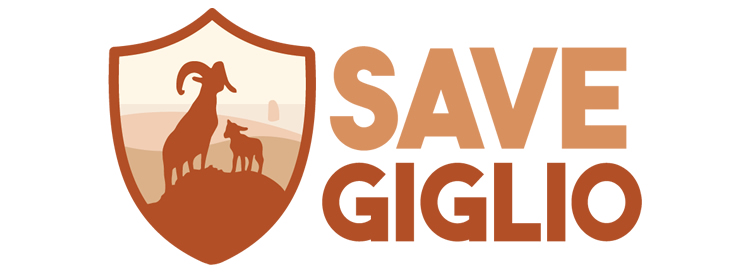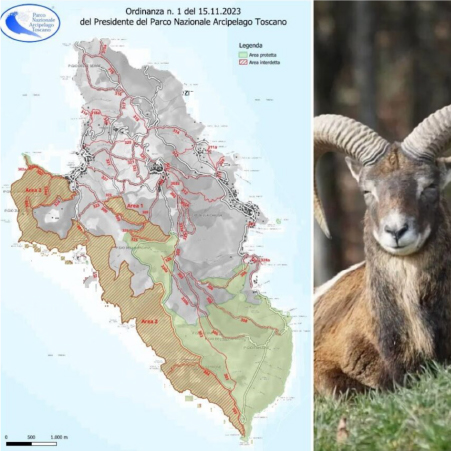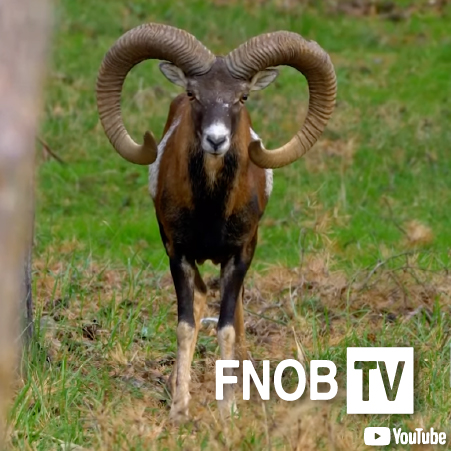Save the Mouflons of Giglio Island
The project "LIFE - LetsGo Giglio" created by the Tuscan Archipelago National Park will have an irreversible impact on the Island of Giglio. The extermination of the mouflons has already begun and many have already been killed. Due to the numerous inconsistencies within this project, we have created a petition to stop the massacre and save the last mouflons of Giglio before they are completely lost.


Preserve Our History & Protect Nature
Recent News
Mufloni: Associations Make Extraordinary Appeal to the President of the Republic
GiglioNews
Staff Writer
02 December 2023
LNDC Animal Protection
Staff Writer
29 November 2023
Firenze Post
Gilda Giusti
29 November 2023
Mouflons on Giglio Island, Brambilla: "Stop the slaughter now, save the last ones left"
Corriere della Sera
Alessandro Sala
29 November 2023
GIGLIO, ENPA: FROM THE SLAUGHTER OF MOUFLONS SERIOUS ENVIRONMENTAL DAMAGE
Nel Cuore
Staff Writer
28 November 2023
"They are slaughtering Giglio's mouflon, a protected species."
GiglioNews
Cesare Scarfo', SaveGiglio.org
27 November 2023
"Stop the extermination of mouflon on Giglio Island"
La Stampa
Staff Writer La Zampa
25 November 2023
National Park closes some trails on Giglio Island to allow mouflon culling
GreenReport.it
Staff Writer
15 November 2023
"Massacre of mouflons at Giglio Island." Animal rights activists furious, it's controversy again
La Nazione
Staff Writer
08 November 2023
La Repubblica
Florence Staff Writers
08 November 2023
Giglio Mouflons: The Unexpected "Missing Evolutionary Link"
GiglioNews
Cesare Scarfo' for SaveGiglio.org
14 July 2023
Giglio Mouflons: The Unexpected "Missing Evolutoinary Link"
VIDEO: 15 Min, National Conference LAV
Dr. Paolo Mereu
14 July 2023
No to the Giglio mouflon cull. Biologists' conference on Biodiversity Day.
FNOB TV
Federazione Nazionale Degli Ordini dei Biologi
23 May 2023
Giglio Mouflons: Biologists, 'They must be saved'. A Conference is Launched
La Nazione
Staff
20 May 2023
Giglio mouflons, biologists unite to save them from culling: "Priceless genetic resource"
Il Giunco
Staff
18 May 2023
Conference on "The management of Italy's natural heritage in recent decades"
Federazione Nazionale Degli Ordini dei Biologi
FNOB.it
02 May 2023
MOUFLONS OF GIGLIO, BRAMBILLA: HOW MANY SHOT AND HOW MANY KILLED BY SNARES
Animali e Ambiente nel Cuore
Staff Writer
08 February 2023
FNOB: Capture of Giglio Mouflons with Snares: High Mortality Rate
Federazione Nazionale Degli Ordini dei Biologi
FNOB.it
08 February 2023
Capture of Giglio Mouflons with Snares: High Mortality Rate
GiglioNews
Cesare Scarfò, SaveGiglio.org
08 February 2023

GIGLIO MOUFLONS: SCIENTIFIC STUDY REVEALS ANCESTRAL DNA, ELSEWHERE LOST
An independent scientific study conducted on the genetics of Giglio Island mouflons entitled “Islands as Time Capsules for Genetic Conservation: The Case of the Giglio Island Mouflon”, was recently published in the scientific journal Diversity.
The results of the study reveal that the mouflons present on Giglio are most likely a relict population elsewhere extinct. Scientists conclude that Giglio mouflons have a high conservation priority and should not be eradicated, but rather safeguarded as a unique element of Biodiversity.
Scientists call for immediate cessation of capture and translocation efforts, shooting and surgical sterilization imposed by the Park Authority. The results of the genetic study identified the mouflon population on Giglio Island as an element of high priority for conservation and the limited number of individuals remaining has endangered this invaluable and unique gene pool. The actions being taken have not made use of genetic analyses, which are now available: we hope that the Park Authority will want to make good use of them and reevaluate the planned actions. Efforts should now be focused on protecting the few remaining specimens and safeguarding this extraordinary relict population.
Read More

UPDATE: INTERROGATION AT THE SENATE ON LETSGO GIGLIO AND OTHER LIFE PROJECTS OF EPNAT
"Primarily, we would like to express our serious concerns about the ongoing "LIFE LetsGo Giglio" project, which involves the eradication of mouflons from Giglio Island and we would like to draw attention again to the "Life Montecristo 2010" project that in January 2012 led to the helicopter launch of over 14 tons of poisoned pellets on the hitherto pristine island of Montecristo. We believe that it is our duty to listen to the voice of the people on these issues and the overwhelming dissent has led us to discover gross inconsistencies within the individual projects that include the lack of preliminary local and independent studies, the misuse of EU funds and the conflict of interest of the "closed loop" of the beneficiaries, co-funders and project designers.
With the project "Life LetsGo Giglio", also funded with about 1.6 million euros, which is being implemented on the island of Giglio, the eradication of the mouflon from the island is also taking place, arbitrarily declared harmful to local agriculture, despite the contrary opinion of at least 50 local farmers and the fact that in over ten years the amount of damage officially declared by EPNAT has not exceeded 1,200 euros, of which 800 euros have been attributed to the collapse of a dry stone wall. As in the case of the Pianosa Hare, it cannot be excluded that future genetic analyses will show that the mouflons of Giglio represent a rare nucleus of surviving individuals of the ancient Sardinian population, extinct after the 1950s. We wonder if rather than hoping for the eradication of the Giglio mouflon, it would not be more appropriate to establish a real ad hoc reserve on the island, in the promontory of Franco, which would have a didactic, cultural, tourist and landscape significance, as well as conservationist, constituting a further attraction for Giglio."
Read MoreThe European Mouflon: Highly Protected in Other Mediterranean Islands
The mouflon, Ovis gmelini musimon, is the ancient ancestor of all domestic sheep that have accompanied the Mediterranean civilization, giving us wool, milk and sustenance for millennia. The mouflon has been present on the Mediterranean islands for about 10,000 years. On the Mediterranean island of Giglio, the mouflons present today are the residual population of a conservation project carried out in the that has successfully helped to save the species from extinction, at a time when it was in serious danger. Today, the mouflon is protected and honored on other Mediterranean islands: in Cyprus, the mouflon is protected and considered the national animal. The mouflon often appears in its artwork, stamps and coins. In Corsica, hunting mouflon has been prohibited since 1953. In more recent times, a law was passed to protect Sardinia's mouflons from hunting and they are now highly protected on the large islands close to us.
Lots of Opposition to the Park Authority's "Letsgo Giglio" Project
After publishing an initial article in the local newspaper "Giglionews" to raise awareness and inform our community about the project, we obtained the support of the vast majority of local farmers who signed a letter expressing their adamant feelings about wanting to keep mouflons on the island and not wanting to see a single mouflon killed. The owners of small vegetable gardens, orchards and vineyards have come together to declare that their crops are not damaged by the mouflon, contrary to the claims of the Park Authority and those connected to the local government. A recent petition has collected to date, almost 20,000 signatures against the killing of mouflon.
The project "Letsgo Giglio" has since entered into the center of controversy among citizens, councilors and farmers of the island together with associations, independent scientists, experts, directors of national parks and journalists. Numerous articles have been published on the subject and in strong opposition to the project.
Cost & Plan of the "Letsgo Giglio" Project
The project called "Life LetsGo Giglio" is co-financed by the European Commission with approximately 1.6 million euros. It was created by the Tuscan Archipelago National Park Authority with the consent of the current Mayor and includes the following actions:
- The extermination of all mouflons - with the use of "Judas radio-collared" animals and snares as well;
- The capture of some rabbits - with traps;
- The eradication/management of the ice plant - with manual methods and with the use of plastic tarps to promote its demise;
- Thinning of one of the pine forests with replanting of native species;
- The creation of four small artificial reservoirs for the Sardinian Discoglossus and the removal of the turtle Trachemys scripta.
The ongoing "LetsGo Giglio" project is based on the EU Regulation 1143/2014, which promotes interventions aimed at controlling alien and invasive species in order to conserve biodiversity and minimize potential financial losses where species interfere with local economies, such as agriculture.
Contrary to the E.P.N.A.T. plan which relies heavily on the culling of the mouflon, the EU regulation specifically suggests that in the event that a species is indeed alien (allochthonous) and invasive (not our case, however, it should be noted with particular emphasis) and needs to be eradicated from a given habitat, non-lethal measures should be taken and it would still be preferable to contain rather than eradicate.

Mouflon of Giglio Island
No Specific Studies on Giglio, Only Generalizations Based on Studies of Exotic Islands
There have been no preliminary studies conducted by independent institutes and experts to prove that the Mouflon is "invasive" on the Island of Giglio. When interviewed by the newspaper La Repubblica, Giampiero Sammuri, president of the Tuscan Archipelago National Park Authority and of Federparchi, explained: "It is universally known that on the islands ungulates are harmful to biodiversity, so we have not wasted money on a specific study on the damage caused by mouflons on Giglio Island". The journalist of La Repubblica then suggested that the mouflons are not accused of having created significant specific damage to Giglio Island and Sammuri replied: "Better to eliminate them and leave space for species with greater right to inhabit the place, green light the return of plants and insects that were there before" (La Repubblica, March 25, 2021).
The Tuscan Archipelago National Park Authority claims that the mouflon is an "alien" and "invasive" species, harmful to the holm oak and local crops on Giglio Island, stating that it is "invasive" based on the damage the mouflon might inflict on plant species endemic to the Hawaiian Islands. The Hawaiian Islands are tropical and have a completely different flora than Giglio. Giglio Island is a Mediterranean island that has a similar habitat to Sardinia and Corsica where the Mouflon has originated and is now protected.
Selective Use of Database Resources to Justify the "Invasive" Label
It should be reiterated that the Tuscan Archipelago National Park Authority has not conducted studies on the Island of Giglio to determine if the Mouflon is invasive. Instead, it has presented generic information taken from an online database to define the Mouflon as invasive. Interestingly, the Park Authority used the IUCN database to validate their project, while the EU tends to prefer the larger international "CABI" database.
The "CABI" data sheet regarding the Mouflon states: "...no negative effects on the native environment have been found in many countries (therefore it is not to be considered invasive)". The conclusions of this fact sheet are based on 140 references.
In contrast, the IUCN fact sheet declares Mouflon an "invasive" species based on only 2 studies conducted on islands distant from Europe: the Hawaiian Islands and the Channel Islands. In Hawaii the study refers to mouflon, in the Channel Islands the study refers generally to large herbivores. It should be noted that the president of the Park Authority, Giampiero Sammuri, is also the vice-president of the Italian committee of the IUCN.
On Giglio the Population Density of Mouflons is Very Low
An important fact that has not been taken into consideration is the population density of the Mouflon, which significant factor relating to the impact a species may have within a given habitat. Recent studies in Sardinia show that habitat imbalances begin to occur when mouflon populations exceed 300 - 400 per 1,000 hectares. On the Island of Giglio there are 12 - 20 mouflons per 1,000 hectares (25 - 40 total specimens in an area of over 2,100 hectares), a population density that would be difficult to produce a tangible negative impact on the environment. Other recent studies carried out by the Department of Biology of Florence on the population of mouflons on the Island of Elba have shown that they are not invasive, as they do not significantly damage the local ilex groves because, out of respect and an innate tendency to reach a balance with the environment in which they live, they tend to graze in a diffused and not localized way, thus eliminating any possible harmful effect and helping to contain possible fires.
The mouflon population on the Island of Giglio has been present for over 65 years. Their population has remained relatively small during the years, so much so that a mouflon sighting is considered very rare. Many islanders who have lived their entire lives on the island have never seen one. Being a species native to the nearby Mediterranean islands, there is a possibility that due to the similarity in habitat, the population has naturalized in this environment and integrated into the biological community.

Images extracted from the Park Authority's Videoconverence the 26th of January 2021
Many Mouflons of Giglio Have Already Been Killed
The Park Authority has already started the extermination of the Mouflons, the last one, without even being able to take it away, has been shot down at long range on the rocks by the sea. Other eyewitnesses report having seen those involved with the project shoot down females with lambs, who left without a mother and milk, were destined to die of hunger and hardship.
Since 2009, 97 mouflons have been killed on behalf of the Park Authority, 54 of which by "assistants of the Park Authority" and 43 by the Provincial Police. From the available data, 25 to 40 specimens of Mouflon are still present on the island. We must save them before they are all destroyed.
How We Can Save Mouflons
The Park Authority is exterminating the Mouflons here on our beautiful island. If we don't stop the project, in a short time they will kill them all and only the bronze statue of the Mouflon atop the Franco promontory will remain.
Without specific studies performed by third parties, the effect that mouflons have on the habitat of Giglio Island cannot be determined. Due to the numerous inconsistencies within the Park Authority’s project, we request the immediate cessation of all activities of the "Letsgo Giglio" project until the appropriate studies can be performed and scientifically evaluated. The current data presented are not, according to many experts in the field, sufficient to proceed with the current actions within the project.
We have prepared a petition to stop the massacre of the last Mouflon of the Island of Giglio.
If you have seen a Mouflon on Giglio Island, we would also like to invite you to share your story with us, as the Mouflon has become an integral part of the folklore of the island community.
We need your help.



















